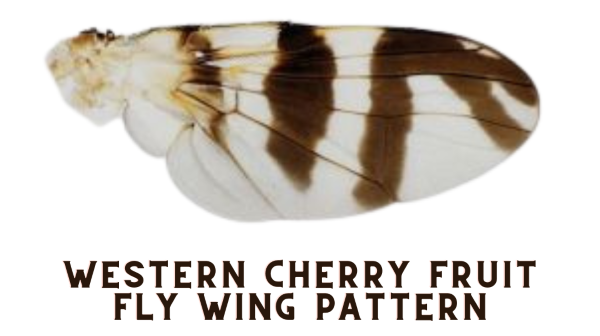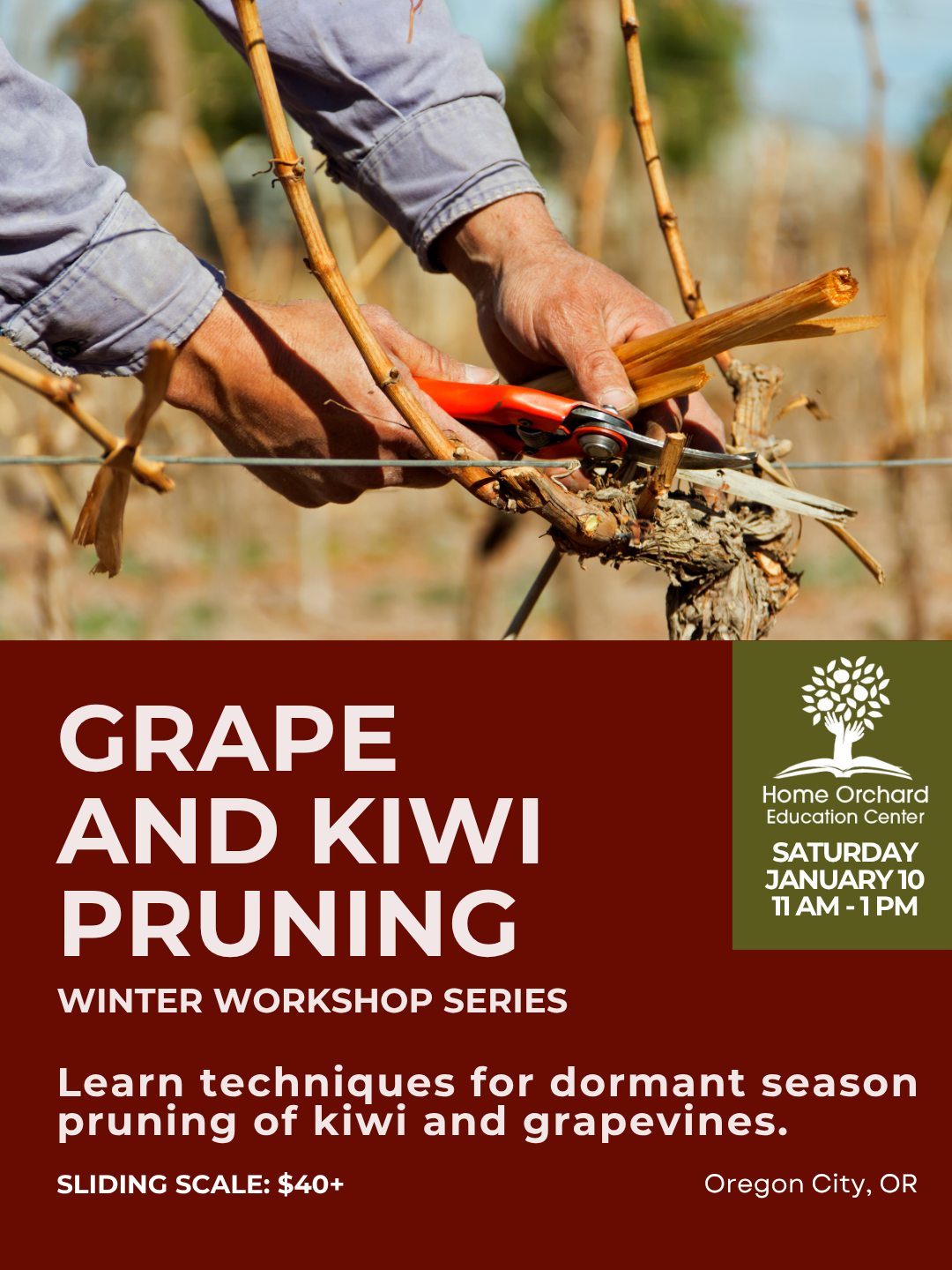Troubleshooting Stone Fruits In The Pacific Northwest
Why are my peach leaves curling, cherry tree oozing, and what happened to the blossoms on my plum!?
Some of the most common concerns we hear from students in spring, are questions related to troubleshooting stone fruits. If you aren’t sure what we mean by “stone fruit”, the answer is in the name. Peaches, plums, cherries, apricots, nectarines, etc. Fruits with a “stone” in the center that contains the seed.
In a perfect world, stone fruits would only be grown in an environment where their leaves could stay dry year round, their roots would live in only the most well drained soil, and no one would dare make a pruning cut to their branches during wet weather.
That’s not to say it’s impossible to grow stone fruits successfully in the Pacific Northwest, just that you’ll need to choose the right varieties and be informed about the challenges you may encounter.
In this post we focus on problems you are most likely to encounter in this region along with some basic remedies and preventative measures. If you’d like to see an even more extensive list, we highly recommend the Pacific Northwest Handbook: Online Host & Disease Database.
Because it’s spring at the time of writing, let’s start with afflictions you might be noticing around this time of year.
Short List Of Common Issues
Peaches & Nectarines: Peach Leaf Curl, Pseudomonas (aka Bacterial Canker or Blossom Blast), Shothole Fungus, Aphids
Apricots: Pseudomonas, Shothole Fungus, Aphids
Cherries: Pseudomonas, Aphids, Western Cherry Fruit Fly, Shothole Fungus, Aphids
Plums: Pseudomonas, Shothole Fungus, Aphids
Please Note
While some of these afflictions exist in plants other than stone fruits, we will focus in this post only on their identification & management in stone fruits.
Peach Leaf Curl
Affects: Peaches & Nectarines
Peach leaf curl is a very common disease caused by a fungus called Taphrina deformans.
Identification:
Symptoms appear in early spring on young shoots and leaves which may display a yellow or reddish color, thicken, pucker, and curl. You may also see bumps or galls. The leaves might stay on the tree, or they could fall off leaving the tree nearly defoliated.
Treatment & Prevention:
👎🏾 Once symptoms appear, there is no reversing the damage done.
👍🏾 However, currently infected leaves do not spread infection to new leaves produced later in the season, so there is no need to remove them.
So how can you help?
1. Consider A Curl Resistant Variety
The most impactful way to prevent tree decline and death from this disease, is to choose a variety specifically resistant to peach leaf curl, such as “Oregon Curl-Free” Peach.
When peach leaf curl hits a resistant variety, the foliage will likely grow back and the tree should be okay unless there are other undesirable factors at play.
When peach leaf curl hits a non-resistant variety, the foliage may not grow back and the tree is more likely to decline and eventually die as time progresses.
2. Lighten The Load
You may notice that diseased leaves often fall off on their own and are sometimes replaced with new leaves. It takes extra energy for the tree to make these replacement leaves, so consider lightening its load by thinning or removing fruitlets.
3. Use A Copper Fungicide
One of the most effective treatments for peach leaf curl is copper fungicide spray. Infections generally occur in late winter just as buds begin to swell, so the most impactful time to spray is while the tree is dormant before those buds begin to swell. Fall is the most important time to spray copper for all pests mentioned in this post. More rounds of spray usually equal better control, however some years even people following strict care routines will experience loss of fruit due to environmental factors out of their control.
Keep in mind that while copper is approved for use in organic systems, excessive use of copper can cause a build up and may be harmful to soil and aquatic life.
Always follow manufacturer instructions very closely. Those details are important and there for a reason!
4. Keep Your Tree Dry
In a perfect world, the leaves on your stone fruit trees would rarely get wet.
While it’s not realistic to build a cover for a field of full size trees, you might consider choosing a dwarfing variety that can be grown in a large container and moved under cover during the rainy season, or growing underan eave or awning. If neither of these options work for your situation, the very least you can do is make sure NOT to use overhead watering systems like sprinklers.
5. Support the General Health Of Your Tree
Jump To: Additional Recommendations For Supporting The Health of All Stone Fruit Trees, or make sure not to miss this important section at the end of the blog post.
Pseudomonas syringae
(aka blossom blast or bacterial canker)
Affects: All Stone Fruits
Pseudomonas syringae is a bacterium spread by rain and insects that is generally more severe in years with a late spring frost, when frost damage creates many easy entry sites for infection.
Identification:
Symptoms of pseudomonas can show up in a number of different ways. Blackened blossoms, bacterial cankers, oozing goo, & shoot tip dieback are all common symptoms of a pseudomonas infection. You will sometimes see the following terms used interchangeably to describe a pseudomonas infection and the word psudomonas won’t even be mentioned. If you are new to the disease and trying to troubleshoot, that can be very confusing! To help ease that confusion, we have separated out the common terms you may see (which are really symptoms) to help you identify and understand the different manifestations of pseudomonas infection.
Blossom Blast
Your tree may flower as usual, when all of a sudden you notice the blossoms or fruitlets have blackened and are falling off. The blossoms may be the only part affected, or the leaves attached to each blossom cluster may die as well. The good news is that blossom blast doesn’t spread into limbs, although it can drastically reduce or completely eliminate your fruit set. This image is of blossom blast on a pear tree, but it will look nearly the same on stone fruit.
Bacterial Canker & Gummosis
Bacterial cankers show up as dark, irregular shaped areas at the base of buds, on limbs, or on the trunk of the tree. A weeping, gummy looking substance may seep from these cankers as the season progresses. This oozing goo is referred to as Gummosis. Pseudomonas is just one cause of gummosis. Other conditions like physical injury, insect damage, or excessive watering or fertilization can also encourage this oozing infection.
Shoot & Tip Dieback
Any time a tree suffers from damage or infection, you may see shoot or tip dieback. It may look alarming if there is alot of dieback, but it is a part of the tree’s natural defense system as it attempts to compartmentalize damage or disease. You may also notice die back when there is damage to a tree’s root system and the roots cannot support the amount of above ground growth.
Treatment & Prevention:
👎🏾 Once you notice symptoms of pseudomonas, the infection is already living in the vascular system of your tree, and there is nothing you can do now to reverse the effects.
👍🏾 You can however, support the health of your tree, and plan ahead for success next year.
So how can you help?
1. Remove Dead & Diseased Material
Remove all dead tissue surrounding cankers and cut dead or visibly diseased material back to the point where a healthy solid surface is exposed. If the cankers were very large, consider applying a copper paste on the wound after the diseased material has been scraped out.
2. Do not make any cuts during wet weather!
Wait until there is a two week window of dry weather when possible. Making cuts during the rainy season, creates entry wounds for infection and wind and water can quickly spread bacterium.
2. Sanitation
Always sanitize all pruning tools after working with an infected tree or when moving from an infected branch to a non-infectied branch. Remove or burn all infected materials, and do not compost them on site.
3. Support the General Health Of Your Tree
Jump To: Additional Recommendations For Supporting The Health of All Stone Fruit Trees, or make sure not to miss this important section at the end of the blog post.
Aphids
Affects: All Stone Fruits
Identification:
Aphids come in many different sizes and colors! Black Cherry Aphid, Green Peach Aphid, Mealy Plum Aphid, Rusty Plum Aphid, Rosy Aphid, etc. Most aphids first attack young succulent growth and also gather on the underside of leaves, causing the foliage to pucker and curl. You will know when aphids are causing the damage because it's easy to spot them. Aphids may also cause damage to the surface of nectarine fruits.
Treatment & Prevention:
1. Support Beneficials
If the tree is mature and the damage is light, you shouldn’t need to do anything. In a healthy environment, ladybugs, syrphid fly larvae, lacewings, and parasitic wasps will usually sort it out for you. But do avoid the use of any broad-spectrum insecticides that might disrupt an aphid's natural enemies.
2. Spray Them Off
If the tree is young, or there are more aphids than you are comfortable with they can usually be sprayed off with water from a hose. If you’d like to take it one step further or avoid wetting the foliage, you can spray with neem oil, insecticidal soap, or a summer horticultural oil.
3. Discourage Aphid Farming Ants!
Do you see a line of ants climibing the tree as well? It’s likely that those ants are actually farming the aphids! After hosing the aphids and the ants off the tree, a sticky trap around the base of the tree will usually keep the ants from coming back up.
4. Support the General Health Of Your Tree
Jump To: Additional Recommendations For Supporting The Health of All Stone Fruit Trees, or make sure not to miss this important section at the end of the blog post.
Western Cherry Fruit Fly
Rhagoletis indifferens
Affects: Wild & Cultivated Cherries
The Western Cherry Fruit Fly is considered a primary pest of both sweet and sour cherries.
For more information: http://treefruit.wsu.edu/crop-protection/opm/western-cherry-fruit-fly/
Identification:
Mature adults are small brownish black flies and can be identified by their wing pattern, but you are most likely to notice an infestation for the first time when you notice a small exit holes in your fruit. Those holes were made by a tiny white maggot before it matures into a fly. You may also find pupae around the tree or their larvae in the fruit.
You can find trusted images and descriptions here at the WSU Comprehensive Fruit Tree Site.
Be aware that Spotted Wing Drosophila (SWD) also lays similar looking maggots in soft skinned fruits. To see the difference between the two, click here.
Treatment & Prevention:
Because the damage occurs from the maggots laid inside of the fruit, we want to catch the adults before they get a chance to insert the larvae.
1. Monitoring
Place baited traps out in early spring before the first flies are expected. Adult flies are attracted to certain colors and odors, and yellow Pherocon AM Baited Sticky Traps have proven to be effective. “Unbaited” traps should not be used as they have not shown to be effective.
2. Insecticide Treatment
Spinosaid (organic approved) has shown to be effective. Apply within a week of the first trap catch. As always, make sure to follow the product instructions very carefully to avoid damage to other non-targeted insects.
3. Post-Harvest Sanitation
Populations can be reduced by diligent attention to harvesting practices.
Pick and remove ALL cherries as early as possible each season before larvae have a chance to emerge and drop into the soil.
Do not leave un-edible, rain cracked, or ant infested fruit hanging on the tree where larvae may have a chance to complete their life cycle.
4. Additional Considerations
Ground Covers and Mulches with dense root systems can prevent larvae from burrowing into the soil to complete their life cycle.
Poultry will eat pupae and other pests hiding in the soil below your trees. Consider allowing them to forage in the orchard.
Shothole Disease
Affects: Can affect all stone fruits to varying degrees
Shothole Disease is an infection caused by a fungus called, Wilsonomyces carpophilus. Spores are produced throughout winter and are spread by wind and splashing water.
Identification:
Leaves develop small, slightly sunken, round spots. The center of these spots fall out, leaving the leaf covered in tiny holes, hence the name Shothole Disease. Infection may progress to woody areas, developing into cankers, killing buds and shoots, or girdling branches. Severe infection can cause major defoliation leaving the trees unable to feed themselves and leading to death.
Treatment & Prevention:
1. Remove Dead & Diseased Material
Cut dead or visibly diseased material back to the point where a healthy solid surface is exposed.
2. Sanitation
Always sanitize all pruning tools after working with an infected tree or when moving from an infected branch to a non-infectied branch. Remove or burn all infected materials, and do not compost them on site.
3. Use A Copper Fungicide
Fall is the most important time to spray copper for all pests mentioned in this post. More rounds of spray usually equal better control, however some years even people following strict care routines will experience loss of fruit due to environmental factors out of their control.
Keep in mind that while copper is approved for use in organic systems, excessive use of copper can cause a build up and may be harmful to soil and aquatic life.
Always follow manufacturer instructions very closely. Those details are important and there for a reason!
4. Support the General Health Of Your Tree
Jump To: Additional Recommendations For Supporting The Health of All Stone Fruit Trees, or make sure not to miss this important section at the end of the blog post.
Supporting The Health Of All Stone Fruit Trees
DO: Give Your Fruit Trees A Nutrient Boost
Soil drenches & foliar applications will support the overall health of your tree, help them build resistance to future infections, and increase their chance of recovery from damage.
Apply Biostimulants, like Stimplex, liquid kelp, compost teas, beneficial bacteria or fungi.
Top dress your planting area with compost.
Applying Lime will help your tree access nutrients that already exist in the soil.
DO: Protect Your Tree From Injury
Many of the diseases listed in this post are fungal or bacterial organisms that enter a plant through wounds.
Paint the tree with Biodynamic Tree Paste or a whitewashing product to protect it from sunburn and insect damage, like a kaolin clay product such as Surround.
Prune well to prevent branch breakage from fruit load or extreme weather events.
Make clean cuts and use proper tools.
DO: Keep It DRY
Wait until the weather will be dry for at least a week to make any pruning cuts.
Consider growing under some sort of cover.
Train to an open center and keep well pruned for maximum airflow.
Prune to keep branches up off of the ground. Low branches stay wet longer.
Choose a well drained planting location or increase drainage capability of the soil whenever possible.
DON’T: Encourage excessive new growth
Fresh vegetative growth is highly susceptible to damage from the bacteria, fungus, and insects listed in this post. When an infection is or may be present, our goal is to decrease their food source. So don't apply nitrogen heavy fertilizers, don’t water excessively, and if you must prune in the dormant season, don’t prune heavily because along with inviting disease, it will promote excessive vegetative growth come spring.
DON’T: Make pruning cuts during wet weather.
DON’T: Use overhead watering systems.
Want to learn more about fruit tree care in person? Join us for a hands-on workshop in the HOEC Community Orchard!
RESOURCES:
https://extension.psu.edu/bacterial-canker-of-stone-fruit-in-the-home-fruit-planting
https://blog-crop-news.extension.umn.edu/2018/12/biostimulants-what-are-they-and-do-they.html
https://pnwhandbooks.org/insect/tree-fruit/peach-nectarine/peach-nectarine-aphid
http://treefruit.wsu.edu/crop-protection/opm/western-cherry-fruit-fly/
https://extension.wsu.edu/chelan-douglas/agriculture/treefruit/pestmanagement/cherryfruitfly/
https://thefarmatgreenvillage.com/shot-hole-disease-treatment-and-prevention/
https://www2.ipm.ucanr.edu/agriculture/peach/Shot-hole-disease/
https://extension.usu.edu/pests/research/western-cherry-fruit-fly
















